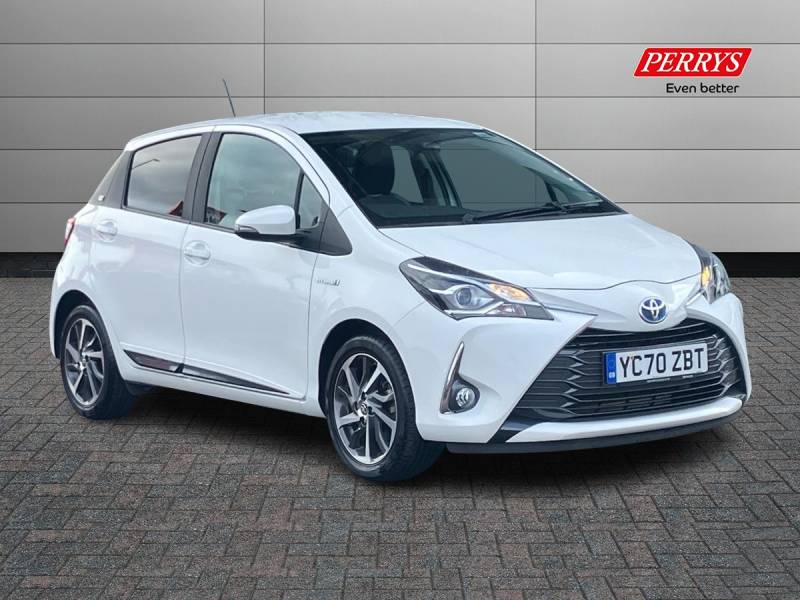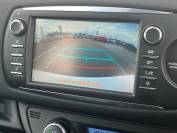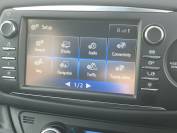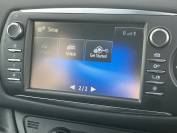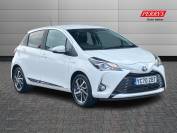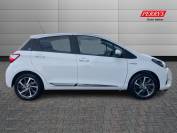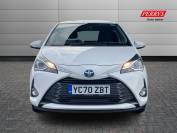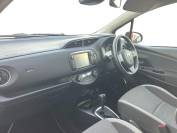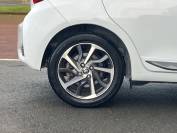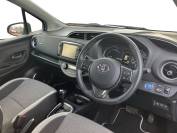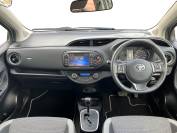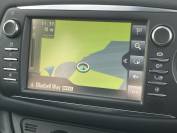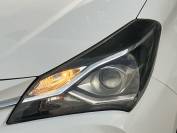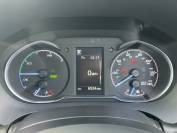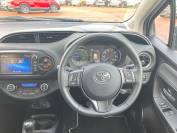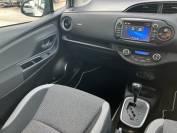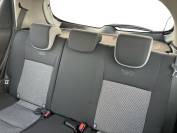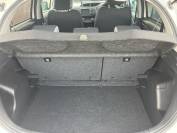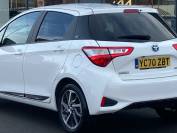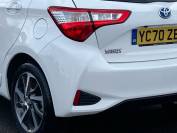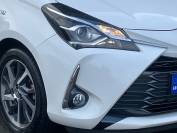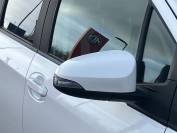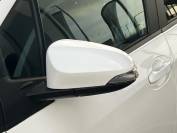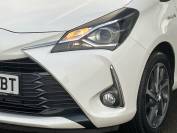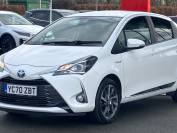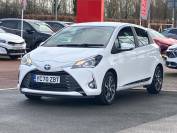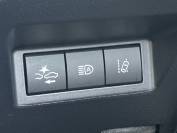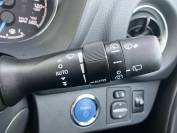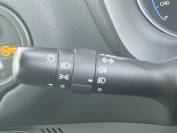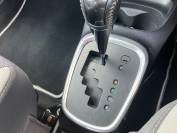TOYOTA YARIS 2020 (70)
1.5 Hybrid Y20 5dr CVT Hatchback
TOYOTA YARIS 2020 (70)
1.5 Hybrid Y20 5dr CVT Hatchback
Financial Disclosure
Perrys is Authorised and Regulated by the Financial Conduct Authority. (307639 ) Finance Subject to status. Other offers may be available but cannot be used in conjunction with this offer. We work with a number of carefully selected credit providers who may be able to offer you finance for your purchase. Perrys - 500 Pavilion Dr, Northampton NN4 7YJ. Companies House Number:972286. FCA number: 307639 .
Finance
We can introduce you to a limited number of lenders whose finance products will have different commission amounts payable to us for introducing you to them. This may be in the form of a fixed fee, a percentage of the balance financed, or another incentive.
The amount of commission that we expect to receive will be detailed to you clearly when we present you with a finance payment offer sheet. The exact commission amount payable to us will be presented to you once your finance proposal has been accepted, and always in good time before you complete any retail finance documentation with us.
We are a credit broker and will not provide you with impartial advice.
We actively monitor all finance transactions to ensure compliance and maintain transparency in all our dealings.
Any lenders we use will conduct a full credit search to decide if they can offer you finance. This search will show on your credit file and will be seen by other lenders. If the lender is unable to offer you finance, we will try up to three additional lenders, each of whom will record a search on your credit file. If these lenders are unable to offer you a finance agreement, we will then contact you and ask if you wish us to contact further lenders on your behalf.
Finance Products:
We will provide you with information to assist with your funding decision relating to Credit Agreements such as: Hire Purchase, Conditional Sale, Personal Contract Purchase (PCP), Personal Contract Hire (PCH) and Finance Leasing.
We will also send you Finance Product Information / Videos by email.
We do not charge you a fee for our services. Whichever lender we introduce you to, we will typically receive commission from them (either a fixed fee or a fixed percentage of the amount you borrow). A customer may ask for commission disclosure at any time from our initial discussions through to the point when their agreement is set live.

Independent Road Test Video & Review Courtesy of Car and Driving
Introduction
Toyota couldn't afford for their third generation Yaris to be an also-ran in the fast-moving supermini segment. So in 2017, they fundamentally revised it with smarter looks, extra safety equipment and a fresh 1.5-litre petrol engine option. A younger audience was being sought for this car in order to broaden this model's appeal. But does it make sense as a used buy? Let's see.
Models
5 door supermini (1.0, 1.5, 1.8, 1.5 Hybrid - petrol) [Active, Icon, Excel, GRMN]
History
Today, a supermini must be more than sensible, practical, well-built and efficient. Buyers now take those sorts of things for granted and look instead for fashion, flair, innovation and technology. Back in 2017, Toyota hoped they'd be seeking something like this, the much improved version of their third generation Yaris. The original version of this MK3 Yaris model, launched back in 2011, was a decent car and quickly distinguished itself in offering the only full-Hybrid powertrain available in the supermini segment. Not every buyer in this class wants or can afford petrol/electric power though, and there simply weren't enough reasons to buy other more conventional Yaris variants when rivals offered more striking looks, more engaging design and a more dynamic driving experience. A far-reaching update in 2014 improved things though and subsequent sales gradually rose - enough in fact by 2016 to take total Yaris production beyond three million units and see the MK3 line account for 6.5% of the European supermini sector. By 2017 though, that market share was coming under considerable pressure, with the arrival of all-new versions of key segment contenders like Ford's Fiesta, SEAT's Ibiza, Nissan's Micra, Kia's Rio and Citroen's C3. Ideally, a completely new fourth generation Yaris design would have effectively countered this threat, but with that still a few years away, Toyota contented itself with the £76 million further re-development of the third generation model that we're going to look at in detail here. It was an update package designed in Europe for European buyers and one that for the first time, was also adopted by the Japanese-made 'Vitz'-badged version of this car that sold across the rest of the world. So, it was a big deal, which is something you quickly discover once you start to drill down into the detail. Over 900 new parts were added to this enhanced MK3 model to improve its design, dynamic performance and safety and, perhaps most significantly, there was a completely new mainstream petrol engine, a 1.5-litre powerplant that at last replaced the previous aging old 1.33-litre unit. For the first time, there was also a high performance race-inspired hot hatch variant, the Yaris GRMN model, which offered a supercharged 1.8-litre engine producing 205bhp. As before, the line-up's major draw continued to be the hybrid powered version that almost half of all Yaris customers in our market wanted - the opposition from this period still had nothing to counter that. As part of the updates, this variant was made even quieter and smoother to drive. In terms of the total range proposition, what it all adds up to, we were told, was supermini fashion at its most friendly, chic city motoring at its most sensible. This fresher take on Yaris motoring lasted until later in 2020, when an all-new fourth generation Yaris model was launched.
What You Get
Though it's a long time since the Yaris has been seen as in any way youthful and extrovert, creating that kind of feel was the objective here. Hip without being hip replacement? Perhaps that's a little cruel, but you get the idea. To create the required effect, the French team tasked with this re-style re-designed both the front and the rear of the car with a greater emphasis on horizontal lines supposed to express a wider stance and a lower centre of gravity. The result was what Toyota described as a more 'dynamic and emotional shape' intended to deliver what the brand hoped was something of a three-dimensional look. At the wheel, it was all a lot plusher and more interesting than was the case with earlier versions of this MK3 model. The cheap glossy look that characterised previous versions of this third generation design was here replaced by classy grained textures and there were also smarter, more interesting colour co-ordinated seat trims. The thicker three-spoke wheel was also new and came complete with the buttons owners would need to operate the 4.2-inch colour TFT multi-information 'combimeter' display that was added between the two main dials in the instrument binnacle. This was a standard feature providing customers avoided entry-level trim - as was the 'Toyota Touch 2' infotainment system that, as before, dominated the centre of the dash. It works via a large, high-resolution 7-inch colour touchscreen that can be operated with the kind of 'drag-and-flick' actions you'll be familiar with from your phone. And in the back? Well you can't comfortably carry three adults in the rear for any real distance, but that's an unreasonable expectation in a car of this size. What's more important is that with knee room improved by thinner seatbacks, a couple of six footers are pretty well catered for. They'll also enjoy more head space than would normally be the case in a car from this class, that being thanks to 1,510mm of exterior body height, enough to make this one of the tallest superminis you can buy. The headroom on offer is particularly impressive given the way that the rear seats are positioned a little higher than those in the front. As for rear luggage space, there's a 286-litre boot, extendable to 768-litres if you push forward the rear bench.
What You Pay
Please contact us for an exact up-to-date valuation.
What to Look For
As usual with a supermini, check for this like interior child damage and scratched alloy wheels. With our ownership survey, we found plenty of satisfied Yaris owners, but inevitably, there were a few issues. A rattling dash was reported by one owner. We also came across issues with creaking suspension and a clunking gearbox, while in one case, the centre console went blank occasionally. And it's been reported that the 1.0-litre petrol engine occasionally suffers problems pulling from, low revs. Look out for all these things on the test drive and, as usual, prioritise models featuring a fully stamped-up service record.
Replacement Parts
(approx - based on a 2018 Yaris Hybrid ex VAT) An air filter is priced in the £14 to £17 bracket. An oil filter costs in the £4 to £6 bracket. On to brakes. A set of front pads tend to retail in the £25 to £37 bracket; for rear pads, it's around £20-£30 for a set. Front brake discs retail at around £30-£62. Rear brake discs cost in the £26-£64 bracket. Front shock absorbers can cost in the £42 to £52 bracket - for rears, it's £42-£66. A radiator will cost a round £184, a water pump around £47 and a thermostat around £10. A headlamp will cost in the £75-£97 bracket; and a tail lamp in the £30-£72 bracket.
On the Road
This third generation Yaris model always sold well in its petrol/electric Hybrid guise. Where the range was always lacking though, was in the provision of an affordable, efficient conventionally-engined variant able to provide a bit of extra performance and undertake the kind of longer trips the Hybrid version feels less comfortable in attempting. The four cylinder 1.5-litre petrol unit introduced as part of this MK3 model's post-'17-era changes attempted to plug that gap and, sure enough, feels usefully more responsive than the old 1.33-litre powerplant it replaced. It was also decently efficient, managing 58.9mpg on the combined cycle and 109g/km of CO2, NEDC figures that original buyers could improve further by paying extra for the optional Multidrive S CVT auto gearbox. We think this powerplant is a much better bet that the line-up's entry-level engine, a rather feeble and only slightly more affordable 69bhp 1.0-litre three cylinder unit. As we said though, a very large proportion of Yaris buyers choose the Hybrid powertrain which in this improved post-'17-era model, as before, featured Toyota's familiar Hybrid Synergy Drive system serviced by a 73bhp 1.5-litre petrol/electric powerplant and a bespoke-engineered CVT auto gearbox. This combination works well around town, able to leave the car operating in electric-only mode for significant periods. Hence the possibility of achieving impressive NEDC figures - up to 85.6mpg on the combined cycle and 75g/km of CO2. This variant struggles a little more when you put your foot down on the open road, but as part of the update changes, great efforts were made to improve ride and refinement, making this an even more agreeable short-journeying companion. At the other extreme sits the frantic 205bhp 1.8-litre supercharged GRMN hot hatch model, a variant with very different priorities in mind. If you're a typical Yaris buyer, you'll probably struggle to see the point of it.
Overall
This improved post-2017 third generation Yaris isn't the contender you'll want in this segment if ultimately, your priority lies with a dynamic drive. To be frank though, we can't imagine too many potential buyers being especially bothered by that. These people prioritise endearing looks over engaging handling and want a trusted brand that'll deliver them low running costs, a comfortable ownership experience and plenty of useful technology. All of which is on offer here, especially in the Hybrid variant that still remains a unique choice amongst used superminis from this period in this segment. So, how to sum up? Well, there are doubtless more engaging chapters in the Yaris story still to be written, but what's important is that the updates introduced here put this third generation version back on track. Toyota, it seems, knows how to right a best seller.



